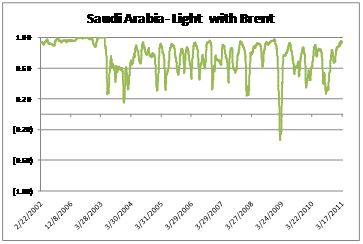This is the second post of a two-part series in which we shall be looking into the trailing correlation between world crude oil prices and the two benchmark price indexes, Brent and the WTI.
Oil extracted from different countries have their own characteristics, and are referred to by their own names. Dubai Fateh is light, sour crude oil used as a benchmark for pricing Persian oil imports to Asia.Abu Dhabi Murban is the oil variant produced in Abu Dhabi.Iran Heavy is the type of oil produced in Iran.Arab Light is a very heavy, sour type of oil extracted from Saudi Arabia.
According to trailing correlations we see a significant dip in the correlation coefficient calculated with respect to WTI in mid-February 2011, when spreads between WTI and Brent widened, while there has been no similar significant fall in correlation values if calculated with respect to Brent. The significant dip in the trailing correlations can be attributed to the Libyan crisis which broke out by the end of January, during which fighting broke out between rebels and the Libyan leader, Muammar Gadhafi’s forces. Oil production has been severely hampered from the country, with Libyan producing at less than half of its pre-crisis production level of 1.8 million barrels per day. More than creating any serious supply bottlenecks in the market, the Libyan crisis has increased speculative behavior in the oil market, which has led to an increase in the oil prices and the significant dip in the trailing correlation.
Trailing Correlations – Abu Dhabi Murban
With WTI

With Brent
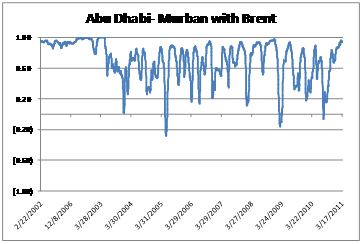
Trailing Correlations – Dubai Fateh
With WTI
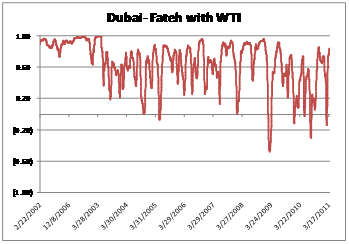
With Brent
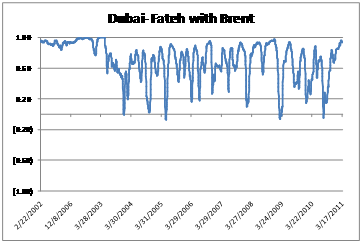
Trailing Correlations – Iran Heavy
With WTI
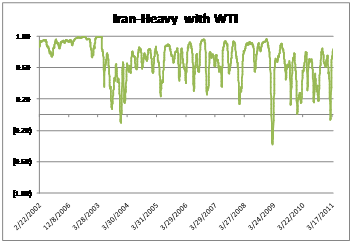
With Brent
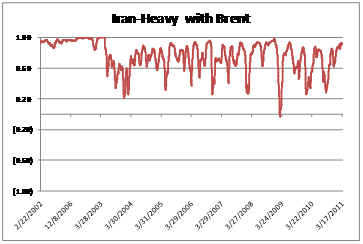
Trailing Correlations – Saudi Arabia, Arabian Light
With WTI
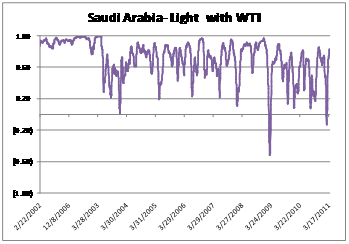
With Brent
